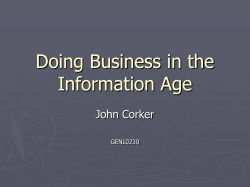
Colloidal Silicon Dioxide
Accessed from 10.6.1.1 by correct6 on Mon May 18 11:02:06 EDT 2015 NF 33 Official Monographs / Silicon 6863 IMPURITIES Inorganic Impurities • LOSS ON IGNITION 〈733〉 Sample: 1 g Analysis: Ignite the Sample, previously dried and weighed, at 1000° for NLT 1 h. Acceptance criteria: It loses NMT 8.5% of its weight. • CHLORIDE AND SULFATE, Chloride 〈221〉: Boil 5 g in 50 mL of water under a reflux condenser for 2 h, cool, and filter. A 7-mL portion of the filtrate shows no more chloride than corresponds to 1.0 mL of 0.020 N hydrochloric acid (0.1%). • CHLORIDE AND SULFATE, Sulfate 〈221〉: A 10-mL portion of the filtrate from the test for Chloride shows no more sulfate than corresponds to 5.0 mL of 0.020 N sulfuric acid (0.5%). • ARSENIC, Method I 〈211〉 Sample solution: Transfer 4.0 g to a platinum dish. Add 5 mL of nitric acid and 35 mL of hydrofluoric acid, and evaporate on a steam bath. Cool. Add 5 mL of perchloric acid, 10 mL of hydrofluoric acid, and 10 mL of sulfuric acid, and evaporate on a hot plate to the production of heavy fumes. Cool. Cautiously transfer to a 100-mL beaker with the aid of a few mL of hydrochloric acid, and evaporate to dryness. Cool. Add 5 mL of hydrochloric acid, dilute with water to 40 mL, and heat to dissolve any residue. Cool. Transfer to a 100-mL volumetric flask, and dilute with water to volume. Analysis: Use a 25.0-mL portion of the Sample solution. Acceptance criteria: Meets the requirements of the test (NMT 3 ppm) Delete the following: •• HEAVY METALS, Method I 〈231〉 . Sample solution: 16.7 mL of the solution prepared for the test for Arsenic Analysis: Transfer the Sample solution to a 100-mL beaker, and neutralize to litmus paper with ammonium hydroxide. Adjust with 6 N acetic acid to a pH between 3 and 4. Filter, using medium-speed filter paper, and wash with water until the filtrate and washings measure 40 mL. Acceptance criteria: NMT 30 ppm• (Official 1-Dec-2015) SPECIFIC TESTS • PH 〈791〉: 4–8 in a slurry (1 in 20) • LOSS ON DRYING 〈731〉: Dry a sample at 145° for 4 h; it loses NMT 5.0% of its weight. . Colloidal Silicon Dioxide SiO2 Silica [7631-86-9]. 60.08 DEFINITION Colloidal Silicon Dioxide is a submicroscopic fumed silica prepared by the vapor-phase hydrolysis of a silicon compound. When ignited at 1000° for 2 h, it contains NLT 99.0% and NMT 100.5% of SiO2. ASSAY • PROCEDURE Sample: 500 mg Analysis: Ignite the Sample in a tared platinum crucible at 1000 ± 25° for 2 h, cool in a desiccator, and weigh. Add 3 drops of sulfuric acid, and add enough alcohol to just moisten the sample completely. Add 15 mL of hydrofluoric acid, and in a well-ventilated hood evaporate on a hot plate to dryness, using medium heat (95°–105°) and taking care that the sample does not spatter as dryness is approached. Heat the crucible to a red color with the aid of a Bunsen burner. Ignite the residue at 1000 ± 25° for 30 min, cool in a desiccator, and weigh. If a residue remains, repeat the Analysis, beginning with “Add 15 mL of hydrofluoric acid”. The weight lost by the assay specimen, previously ignited at 1000 ± 25°, represents the weight of SiO2 in the portion taken. Acceptance criteria: 99.0%–100.5% on the previously ignited basis IMPURITIES Inorganic Impurities • LOSS ON IGNITION 〈733〉: Ignite the portion of Colloidal Silicon Dioxide, retained from the test for Loss on Drying, at 1000 ± 25° to constant weight: the previously dried Colloidal Silicon Dioxide loses NMT 2.0% of its weight. • ARSENIC, Method 1 〈211〉 Sample solution: To 2.5 g add 50 mL of 3 N hydrochloric acid, and reflux for 30 min using a water condenser. Cool, filter with the aid of suction, and transfer the filtrate to a 100-mL volumetric flask. Wash the filter and flask with several portions of hot water, and add the washings to the flask. Cool, and dilute with water to volume. Analysis: A 15.0-mL portion of Sample solution, to which 3 mL of hydrochloric acid has been added, meets the requirements of the test, the addition of the 7 N sulfuric acid being omitted. Acceptance criteria: NMT 8 ppm SPECIFIC TESTS • PH 〈791〉: 3.5–5.5, in a (1 in 25) dispersion • LOSS ON DRYING 〈731〉: Dry in a tared platinum crucible at 105° for 2 h: it loses NMT 2.5% of its weight. Retain the dried specimen in the crucible for the test for Loss on Ignition. ADDITIONAL REQUIREMENTS • PACKAGING AND STORAGE: Preserve in well-closed containers. Official from May 1, 2015 Copyright (c) 2015 The United States Pharmacopeial Convention. All rights reserved. NF Monographs ADDITIONAL REQUIREMENTS • PACKAGING AND STORAGE: Preserve in tight containers, protected from moisture. • LABELING: Label it to state whether it is silica gel or precipitated silica. IDENTIFICATION • A. PROCEDURE Analysis: Transfer 5 mg to a platinum crucible, and mix with 200 mg of anhydrous potassium carbonate. Heat the crucible to a red color with the aid of a Bunsen burner for 10 min, and cool. Dissolve the melt in 2 mL of freshly distilled water, warming if necessary, and slowly add 2 mL of ammonium molybdate TS to the solution. Acceptance criteria: A deep yellow color is produced. • B. PROCEDURE [NOTE—Avoid contact with o-tolidine when performing this test, and conduct the test in a well-ventilated hood.] Analysis: Place 1 drop of the yellow silicomolybdate solution from Identification test A on a filter paper, and evaporate the solvent. Add 1 drop of a saturated solution of o-tolidine in glacial acetic acid to reduce the silicomolybdate to molybdenum blue, and place the paper over ammonium hydroxide. Acceptance criteria: A greenish blue spot is produced. Accessed from 10.6.1.1 by correct6 on Mon May 18 11:02:06 EDT 2015 6864 Simethicone / Official Monographs Simethicone—see Simethicone General Monographs Simethicone Emulsion—see Simethicone Emulsion General Monographs . Soda Lime DEFINITION Soda Lime is a mixture of Calcium Hydroxide and Sodium or Potassium Hydroxide or both. It may contain an indicator that is inert toward anesthetic gases such as Ether, Cyclopropane, and Nitrous Oxide and that changes color when the Soda Lime can no longer absorb Carbon Dioxide. NF Monographs IDENTIFICATION • A. Analysis: Place a granule on a piece of moistened red litmus paper. Acceptance criteria: The paper turns blue immediately. • B. IDENTIFICATION TESTS—GENERAL, Calcium 〈191〉 Sample solution: A solution in 6 N acetic acid Acceptance criteria: Meets the requirements. It also imparts a yellow color to a nonluminous flame that, when viewed through cobalt glass, may show a violet color. SPECIFIC TESTS • LOSS ON DRYING 〈731〉 Sample: 10 g Analysis: Dry at 105° for 2 h. Acceptance criteria: 12.0%–19.0% • CARBON DIOXIDE ABSORBENCY Analysis: Fill the lower transverse section of a U-shaped drying tube of 15-mm internal diameter and 15-cm height with loosely packed glass wool. In one arm of the tube, place 5 g of anhydrous calcium chloride, and weigh the tube and the contents. In the other arm, place 9.5–10.5 g of Soda Lime, and again weigh. Insert stoppers in the open arms of the tube, and connect the side tube of the arm filled with Soda Lime to a calcium chloride drying tube, which in turn is connected to a suitable source of supply of carbon dioxide. Pass the carbon dioxide through the tube at 75 mL/min for 20 min, accurately timed. Disconnect the tube, cool to room temperature, remove the stoppers, and weigh. Acceptance criteria: NLT 19.0% increase in weight of the Soda Lime used for the test • HARDNESS Sample: 200 g Analysis: Screen the Sample on a mechanical sieve shaker (see Particle Size Distribution Estimation by Analytical Sieving 〈786〉) having a frequency of oscillation of 285 ± 3 cycles/min, for 3 min, to remove granules both coarser and finer than the labeled particle size. Weigh 50 g of the granules retained on the screen, and place them in a hardness pan that has a diameter of 200 mm and a concave brass bottom 7.9 mm thick at the circumference and 3.2 mm thick at the center, with an inside spherical radius of curvature of 109 cm. Add 15 steel balls of 7.9-mm diameter, and shake on a mechanical sieve shaker for 30 min. Remove the steel balls, brush the contents of the hardness pan onto a sieve of the fine-mesh size designated on the label, shake for 3 min on the mechanical sieve shaker, and weigh. Acceptance criteria: NLT 75.0% of Soda Lime is retained on the screen. NF 33 • MOISTURE ABSORPTION Sample: 10 g Analysis: Place the Sample in a tared 50-mL weighing bottle having a diameter of 50 mm and a height of 30 mm, and weigh. Then place the bottle, with cover removed, for 24 h in a closed container in which the atmosphere is maintained at 85% relative humidity by being in equilibrium with sulfuric acid having a specific gravity of 1.16. Weigh again. Acceptance criteria: The weight increase is NMT 7.5%. • PARTICLE SIZE DISTRIBUTION ESTIMATION BY ANALYTICAL SIEVING, Method I 〈786〉 Sample: 100 g Analysis: Screen the Sample for 5 min as directed, using a mechanical shaker. Acceptance criteria: It passes completely through a No. 2 standard-mesh sieve, and NMT 2.0% passes through a No. 40 standard-mesh sieve. NMT 7.0% is retained on the coarse-mesh sieve, and NMT 15.0% passes through the fine-mesh sieve designated on the label. ADDITIONAL REQUIREMENTS • PACKAGING AND STORAGE: Preserve in tight containers. • LABELING: If an indicator has been added, the name and color change of such indicator are stated on the container label. The container label also indicates the mesh size in terms of standard-mesh sieve sizes (see Powder Fineness 〈811〉). Sodium Acetate—see Sodium Acetate General Monographs . Sodium Alginate (C6H7NaO6)n Alginic acid, sodium salt; Sodium alginate [9005-38-3]. DEFINITION Sodium Alginate is the purified carbohydrate product extracted from brown seaweeds by the use of dilute alkali. It consists chiefly of the sodium salt of Alginic Acid, a polyuronic acid composed of β-D-mannuronic acid residues linked so that the carboxyl group of each unit is free while the aldehyde group is shielded by a glycosidic linkage. It contains NLT 90.8% and NMT 106.0% of sodium alginate of average equivalent weight 222.00, calculated on the dried basis. IDENTIFICATION • A. Sample solution: A solution (1 in 100) Analysis: To 5 mL of Sample solution add 1 mL of calcium chloride TS. Acceptance criteria: A voluminous, gelatinous precipitate is formed immediately. • B. Sample solution: A solution (1 in 100) Analysis: To 10 mL of Sample solution add 1 mL of 4 N sulfuric acid. Official from May 1, 2015 Copyright (c) 2015 The United States Pharmacopeial Convention. All rights reserved.
© Copyright 2025














